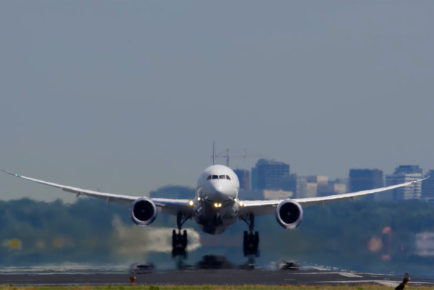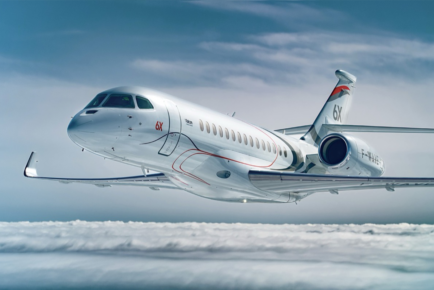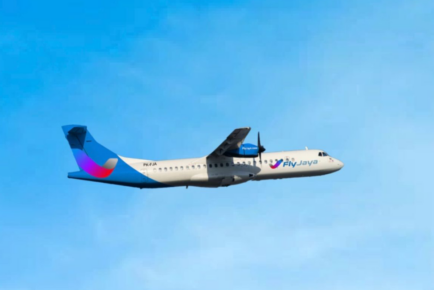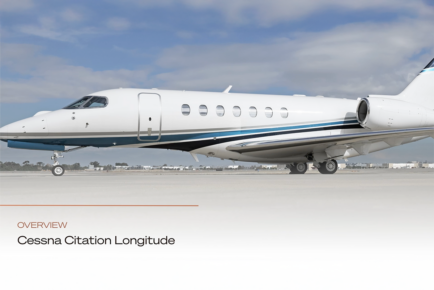AvBuyer Magazine, March 2016
by Ken Elliott
Helping you understand the technology, integration and advances of aircraft avionics and equipage, Ken Elliott continues a five-part series on aircraft connectivity, this month with a review of on-board connectivity.
In last month’s aircraft connectivity article we reviewed providers of communication and data as well as a breakdown of the services they offer. Moving to the aircraft this month, we will see how on-board connectivity is associated with a multitude of external resources, many with minimal pilot intervention. In fact, while the pilot(s) concentrate on flight plan execution, a whole other spectrum of activity may be unfolding between cabin and cockpit systems and the world outside.
Today, a number of flight departments are able to provide a ‘company in the sky’ experience to their corporate teams, enabling minimal interruption to time-critical business activity and all taking place aft of the cockpit door. Meanwhile the pilot(s) can run a real-time travel management and operations business up front, with an aviation department flight attendant also playing an important role.
On the aircraft itself, there are systems that can ‘see’ and select from the broader information traversing the ocean of airspace. These same systems as well as others provide the means of communication to the crew, passengers and directly to aircraft avionics. Some communication components, often as single ‘boxes’, focus on conversion, and others simply display the information provided to them. Part 2 of ‘Connecting on Board’ will concentrate on conversion and display of information within aircraft.
 In order to see external information, an aircraft uses antennas tuned to seek out minute signal levels of information carrying waves radiated at different frequencies. These carrier frequencies carry information modulated as voice, data and video. For efficiency, the modulation signals are sometimes compressed and scrambled.
In order to see external information, an aircraft uses antennas tuned to seek out minute signal levels of information carrying waves radiated at different frequencies. These carrier frequencies carry information modulated as voice, data and video. For efficiency, the modulation signals are sometimes compressed and scrambled.
An aircraft may have a significant number of antennas, each looking for and radiating at a specific atmospheric-penetrating frequency. Those that need to communicate with satellites look for, lock on and then track the satellites’ movement, executing exotic hand-offs as the earth rotates below the satellites’ stationary or orbital flight paths. Satellites often perform multiple tasks, one of which may be acting as a transponder. In this manner the satellite receives ground-sourced information, boosts it and then resends amplified signals to aircraft satellite antennas.
Cables within the aircraft route the carrier signal to and from transceivers that access and process the audio, data or video information being transported by its carrier.
Typically airborne systems have a control, processor and an output. The control may be automatic or via human interface. The processor, in essence, is directed to perform its specific function. Then selected and processed information is provided as an output in digital (data), audio or video form
Onboard Information Seeking/ Providing External Information
 Weather: For an aircraft, weather is derived several different ways. Instruments using atmospheric probes detect the atmospheric conditions. A weather radar, mounted in the nose, provides real-time precipitation and (by analogy) turbulence, albeit with limited range and field.
Weather: For an aircraft, weather is derived several different ways. Instruments using atmospheric probes detect the atmospheric conditions. A weather radar, mounted in the nose, provides real-time precipitation and (by analogy) turbulence, albeit with limited range and field.
Satellites, via Satcom, provide detailed nearterm weather, and ADS-B In provides the same. Sirius/XM, using a dedicated antenna, may also be providing weather. Even stand-alone lightning sensors are installed in some aircraft. Traditionally, and still available, is weather information at airports and elsewhere, provided via VHF and HF.
Satcom, FANS & Data: Primarily focused on oceanic operations, where satellites boost and relay service-provider information, aircraft Satcom serves as the transceiving device for communications and digital data to and from the aircraft.
Future Air Navigation System (FANS) uses the Satcom and includes aircraft surveillance via ADSC. High rates of bi-directional digital data may be transferred between aircraft and the orbiting or geostationary satellites. Passenger and some crew voice communication is also routed through the Satcom.
Companies such as FLYHT Aerospace Solutions, Ltd. offer streaming data capability using their stand-alone onboard AFIRS and ACARS-over- Iridium service. These onboard processors also connect to portable devices used by the flight crew. However, data can be shared via the internet to corporate VPNs. Examples of aircraft and fleet performance data are Health & Usage Monitoring Systems (HUMS) and Engine Trend Monitoring (ETM).
Streams of real-time aircraft diagnostic and performance data can be sent via the same Satcom used for voice. In fact, we live in the age of the Internet of Things (IoT), where for example, an aircraft on an average flight can now produce performance data measured in Terabytes, (e.g., the new Bombardier C-Series). Transferring all these data, in real time, to the ground becomes ever more an issue of bandwidth, where all the technology involved must have the capacity to handle the volume of information.
Below is additional guidance with respect to Satcom’s satellites, and the frequency of the carrier waves used:
- L-Band uses frequencies between 1 to 2GHz. L-Band provides narrower bandwidth and is used to meet light business jet requirements.
- Ku-Band utilizes approximately 12-18GHz range. The legacy Ku-Band is still widely used and has a medium bandwidth adequate for most applications where data capacity requirements are not so critical.
- Ka-Band services operate between 26.5- 40GHz. Ka-Band is being used by newer satellites and has very high data capacity and transfer rates, due to greater bandwidth.
Broadband: Speaking of bandwidth and the need to connect via the internet, OEMs and operators are equipping their aircraft more and more with dedicated systems that link to broadband services. Viasat, with its high capacity satellites, is just one of the broadband providers. Its use of both Ka- and Ku-Band satellites, along with its aircraft equipment and service plan, provides flexibility and single source accountability for operators.
With broadband capability, operators can easily conduct high-definition video conferences, stream music and video, connect live to their corporate VPNs and do much more while airborne.
VHF & HF Communications/Data: Traditionally and yet still in use, lower frequency transmission activity takes place over land and sea using VHF and HF. Controller Pilot Data Link Communication (CPDLC) is one current use of data over VHF. For HF this is known as High Frequency Data Link (HFDL). Popular for flight clearances, these legacy technologies will be around for some time to come.
ADS-B Out/In & Transponders: Leaping to the present, bi-directional and automated aircraft flight surveillance data flow between different aircraft and air traffic control facilities. The ADS-B technology includes the use of updated Transponders, Flight Management Systems (FMS) and other onboard equipment to facilitate this capability.
Weather, for display and useful en route flight information, is further provided when aircraft are ADS-B In equipped. For those with Satcom, ADS-C provides for similar ADS-B Out capability in Oceanic regions.
Emergency & Tracking: This is an information area that is truly booming, especially with air carriers and for aircraft operating in remote regions. Emergency equipment has been around for many years, but new to the market is equipment that tracks, monitors and frequently relays the aircraft flight status, for real-time use by a variety of interested parties.
Many traditional service providers, including wellknown names, have added dedicated flight tracking service to their portfolios. Some examples of companies that specialize in flight tracking are; Spidertracks, Skytrac, Flightaware and Blue Sky Network.
Emergency Locator Transmitters (ELTs), located in the rear of the aircraft and near the tail, are activated by excessive G forces, or may be switched to transmit, manually. Operating at 121.50, 234.00 and 406.00 MHz, they provide aircraft location and identification. 406 MHz ELTs can also provide the aircraft location via internal GPS.
Onboard Information Systems Primarily For Aircraft/Crew
 Video & Audio: Once demodulated from the antenna signal by the system processor, video and audio can be distributed across both the cockpit and cabin. Advancements, such as high-definition video and low-noise digital audio, are only limited by the capacity of both external and internal systems to handle bandwidth requirements.
Video & Audio: Once demodulated from the antenna signal by the system processor, video and audio can be distributed across both the cockpit and cabin. Advancements, such as high-definition video and low-noise digital audio, are only limited by the capacity of both external and internal systems to handle bandwidth requirements.
As more automated data information is visually displayed to flight crews, there is less reliance on audio.
Voice & Data Recording: Currently on many business aircraft a history of each flight is being recorded. Today voice and data are combined in single recorders. Flight Data Acquisition Units (FDAUs) collect thousands of data parameters representing the aircraft’s in-flight performance and interfacing those quantities of information to the Digital Flight Data Recorder (DFDR), as well as Quick Access Recorders (QARs).
QARs speedily access raw flight data and downlink them, via Satcom, to flight departments and operations centers. Sampling and refresh rates of QARs are different than FDRs because, although they are systems using similar technology, they perform different functions.
Cockpit Voice Recorders (CVR), designed or upgraded for FANS, need to be data capable to enable the recording of data link and digital messages in flight.
Because these CVRs and FDRs (or CFDRs) are designed for survivability, they include emergency location transmitters. While not operating during flight, beacons on recorders are very much communicating devices when the situation dictates. Deployable DFDRs, equipped with GPS and activated upon deployment, may be located more quickly; even if they cannot be immediately recovered, they will transmit recent flight data, recorded prior to activation.
Wi-Fi: Often Wi-Fi is a subset of a broader Satcom system working with either Inmarsat or Iridium satellites and associated on-board equipment. So either as a subset or a stand-alone system capability, the processor output for Wi-Fi will go to a routing system for the aircraft.
When the aircraft is on the ground, routers may also connect directly to cellular systems, enabling even ground maintenance operations that require connectivity. Routers provide a method for passengers and crews to connect via Wi-Fi and Ethernet for laptops, smartphones, personal electronic devices and electronic flight bags.
Live Communications & Data: As opposed to recording of voice and data, existing radios, ACARS, VHF data link (VDL) or HFDL and the use of Satcom are employed primarily for live communication and transfer of information data.
Several independent systems, each with their own antennas, fulfill this role. Communication and flight management devices are often on dual configuration. Data are transferred between devices, as well as to outside the aircraft. As a reliance on HF slowly fades into the sunset, so may the use of VHF. This is in line with a more automated and direct data (or digitized voice) approach to communications. Of course, as unmanned aircraft migrate into the NAS, communication will become digital and automated, machine to machine.
Crew Information: For crews, there is the need to provide information in a number of different ways. The most immediate form is alerting and advisory information, provided both aurally and visually. Important notifications can originate from outside the aircraft. An example of this will be weather and flight information alerts for the flight plan in use. Crews need to know the status of their systems and be able to react to any abnormal conditions.
Cabin crews and passengers need to connect to the cockpit and visa-versa. The flight crew are able to control to some degree what is shared within the cabin.
Flight departments and others may communicate directly with the crew via messages and voice, while service providers continuously update the trip planning and arrival services.
Flight crews are reliably connected to other aircraft and the ground via today’s cockpit technology. Clearances, passenger plan changes, route amendments, and so much more can be accommodated in the modern connected cockpit.
Other Aircraft Systems: For maintenance personnel and flight crew on the ground, having connectivity enables the downloading of performance data, virtual live troubleshooting by remote field service representatives, uploading of databases and the use of many mobile applications—all being additional and useful tools in the technician’s tool kit.
Systems on board may be connected via modems, USBs or dedicated ports, to portable devices. iPads, Androids and Laptops are used in most flight departments and hangar operations today, reducing downtime, cost and misdiagnosed faults.
 Summary
Summary
Across the preceding paragraphs, we have outlined the layer of ‘information-platforms’ communicating in and out of the aircraft. Between the information that satellite and ground networks transfer and what is managed for operators by service providers, it is clear there is an ever expanding amount of data going back and forth.
The next article in this series will drill down even further within the aircraft to address onboard services. It will focus on how information is transferred, converted and displayed within both the cabin and the cockpit.
There are different protocols and specialists in this area. Above all there is a lot to consider, because free enterprise and competition have provided us with many choices and, therefore, the potential for many issues.
While a good thing, the expansion of choices opens up opportunities for different technology integrations, each with a unique path and a potential risk of incompatibility.
Equally, aircraft OEMs increasingly favor single avionic suites and branded cabin management systems, presumably safe from these integration risks, secured by their proprietary software networks. As you may discover your aircraft may be designed and outfitted either way.
Are you looking for more articles on avionics? Visit www.avbuyer.com/articles/category/business-aviation-avionics/
❯ Ken Elliott is a highly-respected industry authority on avionics as a member of the NextGen Advisory Council sub-committee and Technical Director, Avionics at Jetcraft. Contact Ken via [email protected] or www.www.jetcraft.com.
This article was written by Ken Elliott, Jetcraft Avionics – Technical Director, for AvBuyer Magazine. It was published in the March 2016 issue. Click here to view the Digital issue of the March AvBuyer or to view Archived editions.
SIGN UP FOR OUR MONTHLY JETSTREAM RECAP
Don't miss future Jetstream articles. Sign up for our Jetcraft News mailing list to receive a monthly eblast with links to our latest articles. Click to join the 1,800+ subscribers on our mailing list.





